
You are looking at the historical site of Fort Hauchuca, the buildings are newer but the beautiful mountain frames the very spot where Captain Whitside brought new recruits to live in their tents and fight the Indians.
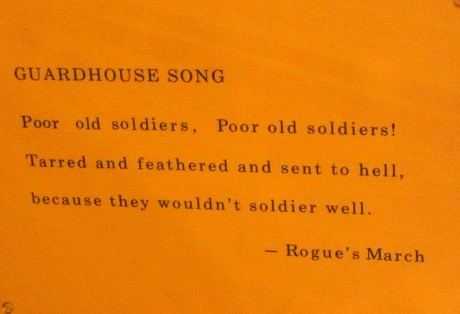
They sang, they trained, they marched and accepted their lot.

During the grueling Apache campaigns, officers decided a soldier could live on 3/4 pound of slab bacon, or l 1/4 pound of fresh beans; 1 1/8 pounds of flour or 1 lb of hard bread; 0.15 pounds of dry beans, or 0.10 pounds of dry rice; 0.10 lb of coffee and 0.15 lbs of sugar. An Irishman might lament a diet of beans and bacon and did so in song:
“We wint to Arizona, got to fight the injins there, we came near to be made bald-headed, but they dint git our hair. We lay among the ditches, in the dirty yellow mud, but we never saw a turnip, an onion or a spud.”
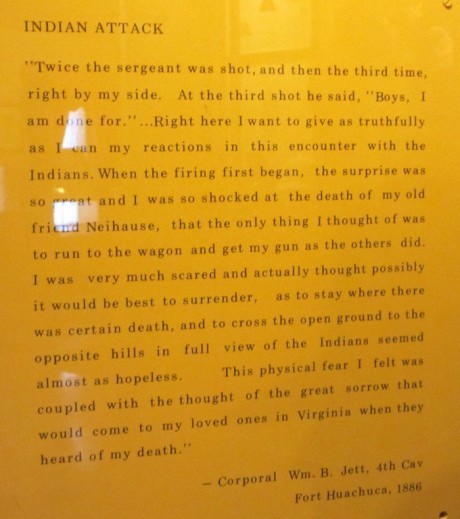
And then, later, they built their own quarters.
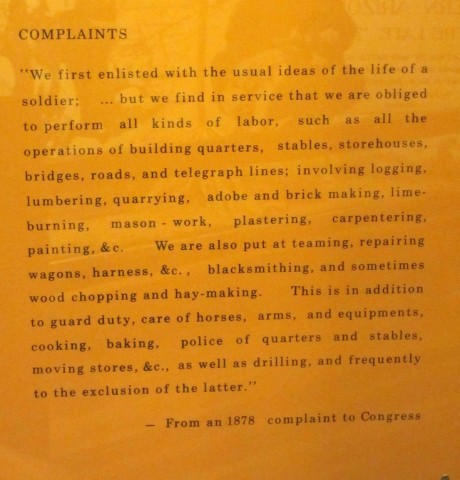
Women joined their husbands after permanence came to Fort Huachuca.
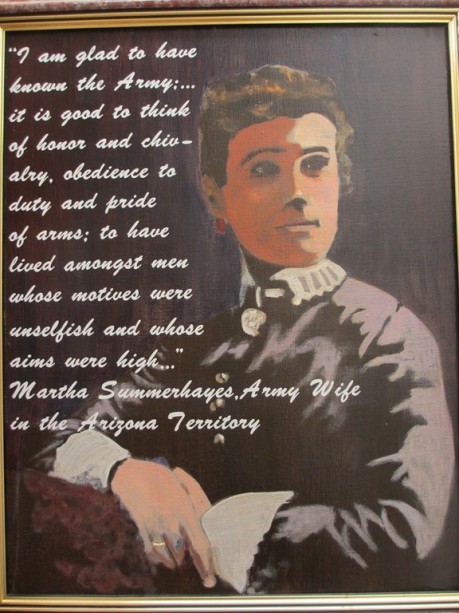
It wasn’t easy for the enlisted men’s wives and they, too, put their woes to verse.
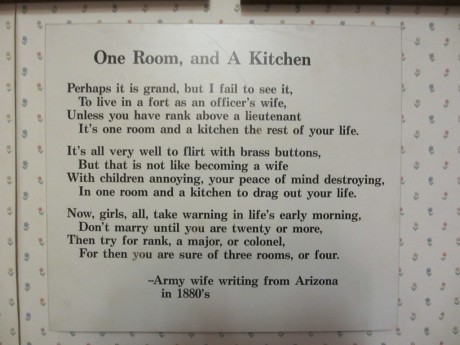
By this time the Mexican border skirmishes were subdued but Pancho Villa lived to fight another day.
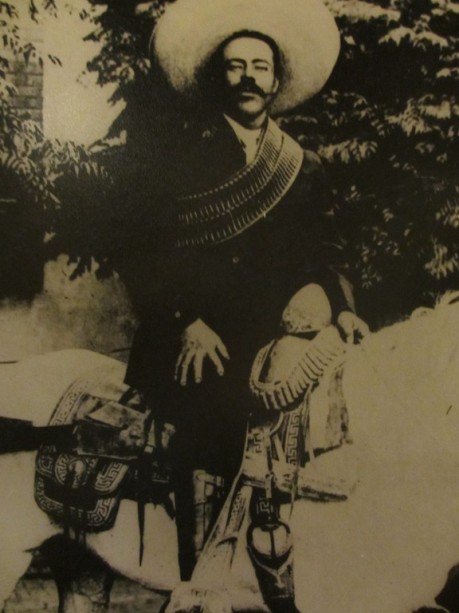
The fort, along with 70 other forts between Texas and California, saw settlers into the Western regions and secured and expanded the borders of the United States.
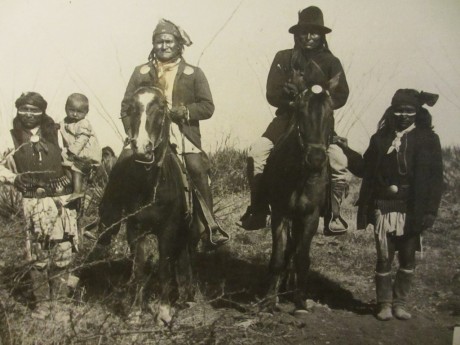
In 1886, Captain Lawton, and Lt. Charles Gatewood rode into Geronimo’s camp and asked him to surrender. These photos are from his first surender when he signed a peace treaty. A magazine cameraman got the first photos of Geronimo during the negotiations for that first surrender.
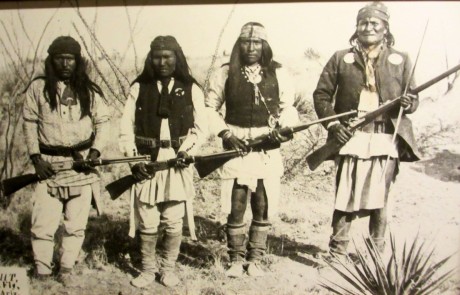
The cameraman was intent on his work and would ask Geronimo, stand here, turn your foot that way. Much to the officer’s surprise, Geronimo did as the cameraman suggested.
Eleven years later, the army was using the Apache’s for scouts.
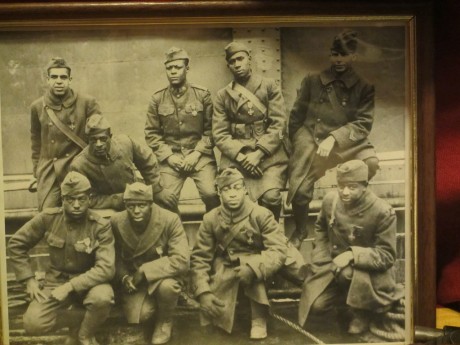
An Arizona regiment of Buffalo Soldiers came to the fort in 1892. They had been stationed in Arizona since 1885. They were much admired by the Indians who referred to them as “buffalo soldiers” because their wooly hair resembled the curly buffalo hair between the horns. The soldiers liked and accepted the name and went with it. The Buffalo Soldiers fought the Indians, Mexican insurgents and proved their metal in many ways. They didn’t get the acceptance they wanted after the Civil War, but they didn’t give up. They were indispensable foot soldiers in WWI. Several men received France’s Crosse de Guerre, during battles in France fighting with the French army. One man stood out above the rest, Corporal Eddie Stowers was recommended for the United States Medal of Honor for his heroic actions. The paperwork conveniently “got lost.” African Americans didn’t get the acceptance they had earned as hard fighting Americans then, either.
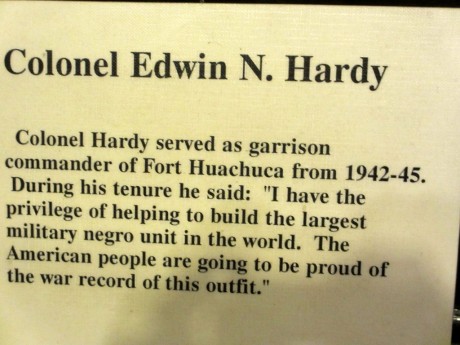
Nor after World War II. In fact, Corporal Stowers didn’t get his metal awarded to his family until 1991. Click on his story to read about his heroism. What a blot on the American conscience to have so treated a heroic soldier in this manner, and the still overt and subtle racism we have today.
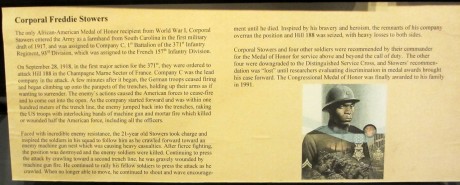
The fort was predominantly home base to the Buffalo Soldiers for 38 years, with various regiments in and regiments out. At times, they were the only soldiers on post.
The Apache served again, not only as enlisted men, but for the use of their language for codes during WWII that the enemy could not break.
Modernization came. Most of those 70 forts are gone but Fort Huachuca is still a vital link in the service of our country. It has seen every war. It closed briefly after WWII and for seven months after the Korean war. It was revamped as an intelligence center. In 1954 it became the electronic warfare proving ground and test center and is still used as a vital part of our defense today. A separate museum depicts early army intelligence.
I like museums but sometimes they overwhelm. This one gave its story in an easy flow, without miring you in minutiae. Besides the people of the Fort, there are wonderful paintings, drawings and sculpture. The grounds have much history and archeology to view as well. Well worth a stop if you are traveling in this area.
balenciaga sneakers
ReplyDeletehermes belt
moncler coat
nfl jerseys wholesale
yeezys
moncler
coach outlet stores
hermes belts
yeezy 500
balenciaga sneakers